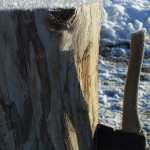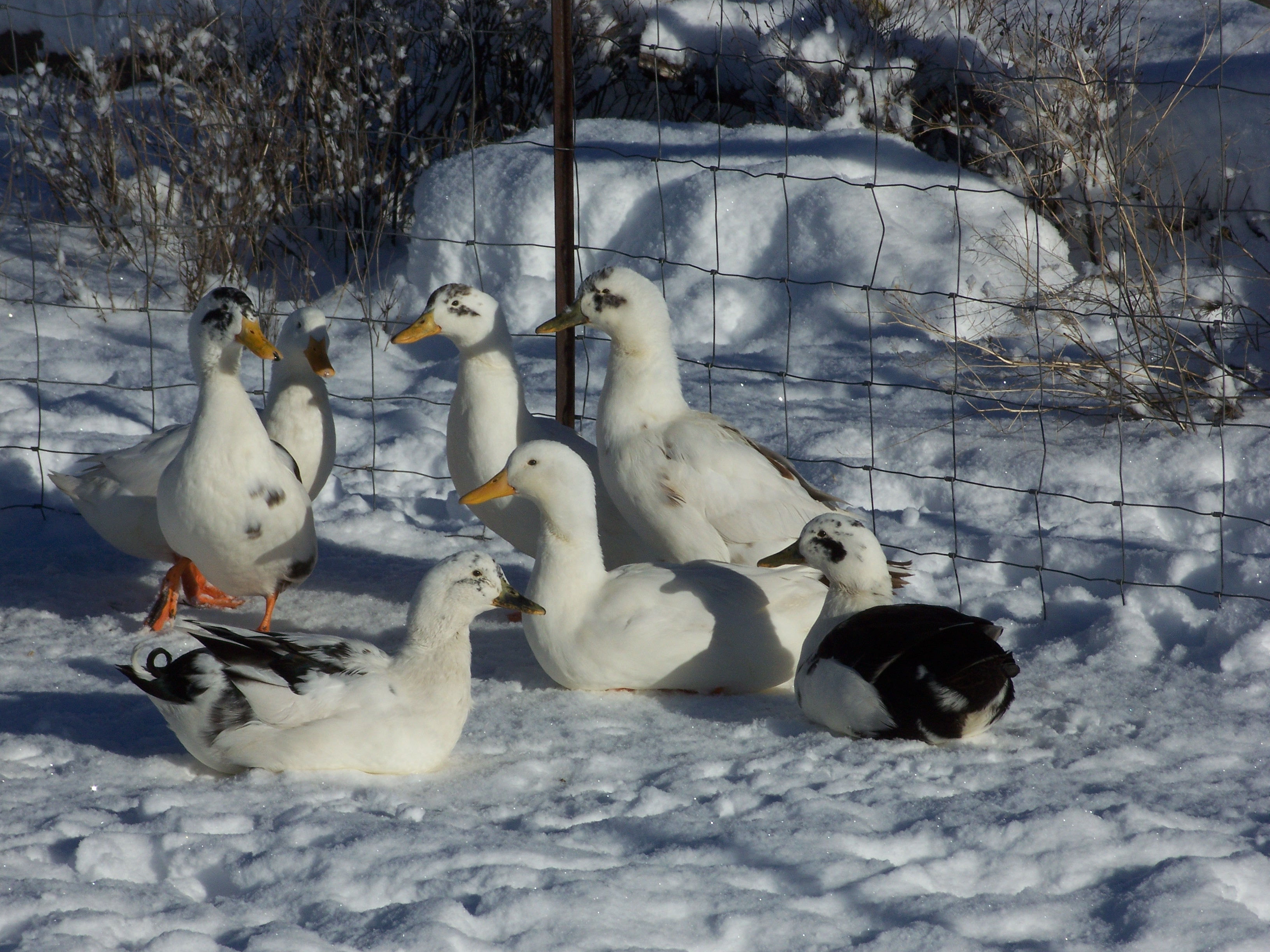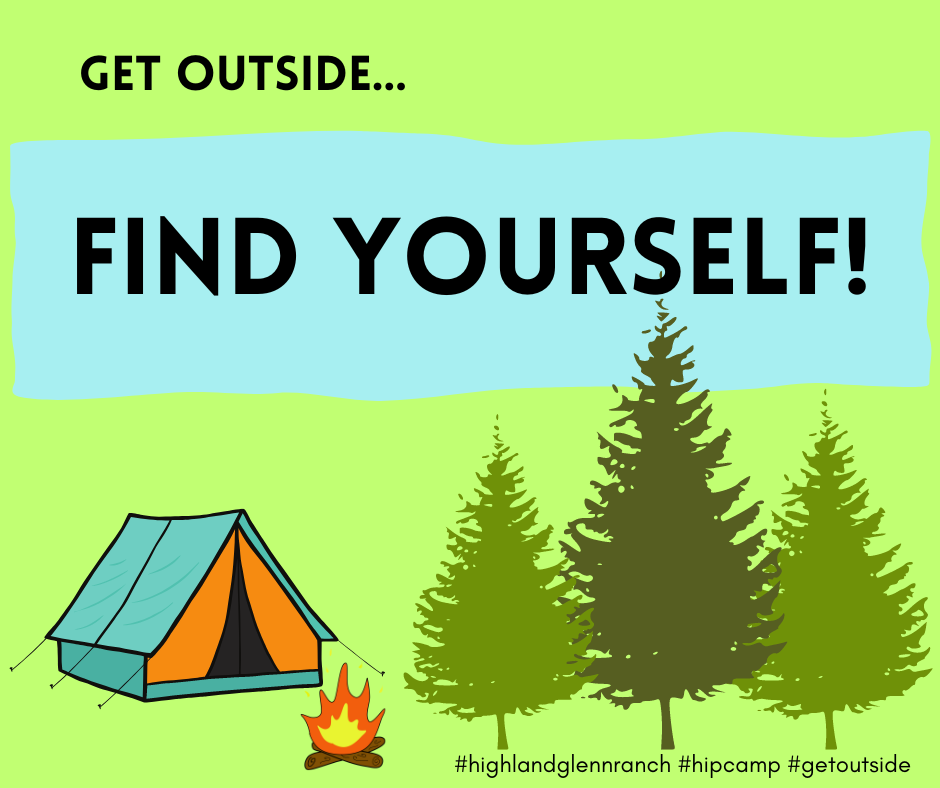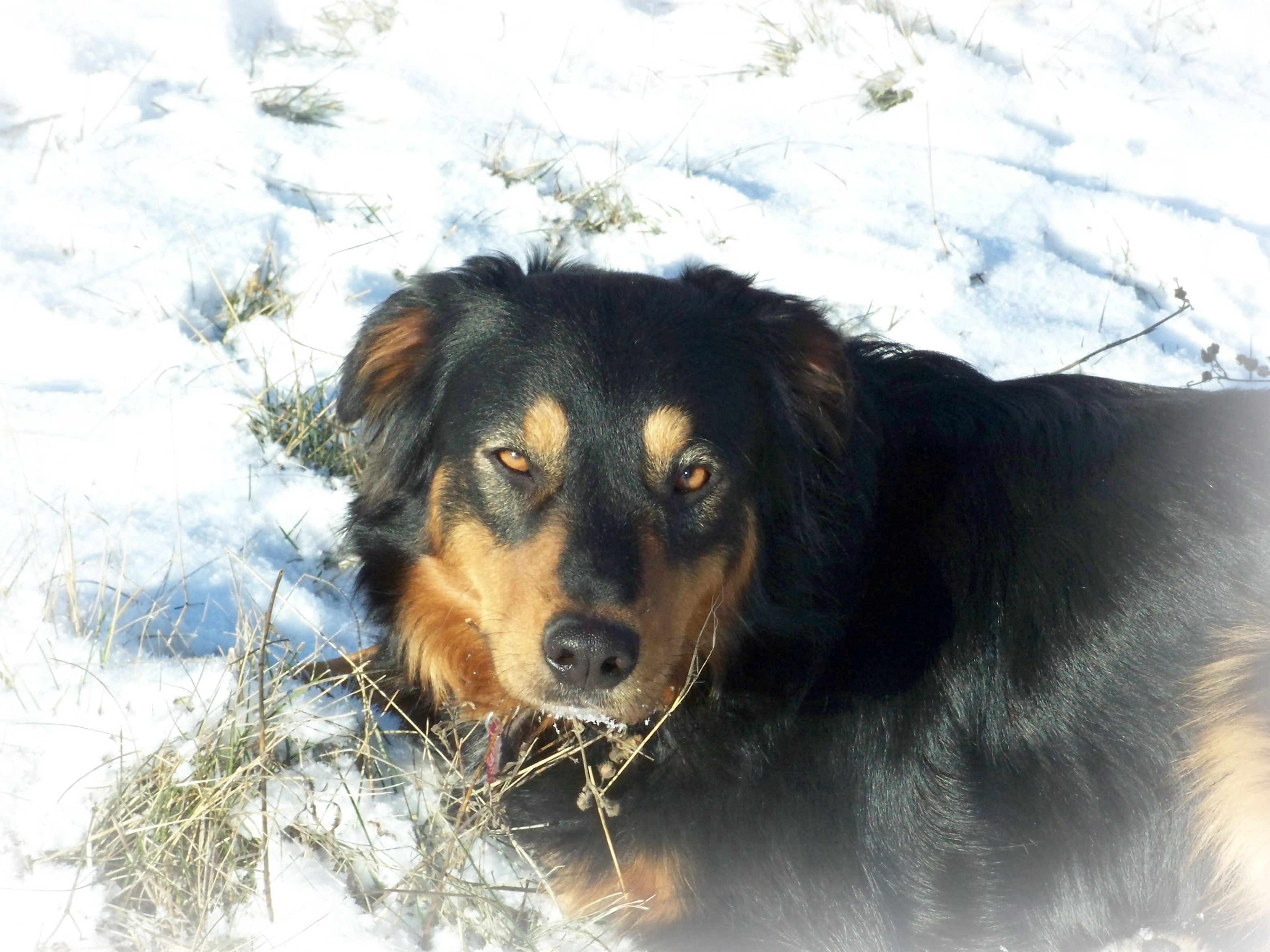Every autumn the age-old question “Are you ready for winter?” starts to pepper local conversations. Being ready for winter in our remote mountain area means different things for different people.
Some things need doing every year; others don’t, so our list changes from year-to-year. For 2018 it includes the following:
- Cut, chop, and stack firewood– Small spaces heat very easily so we only need about one and a half cords of wood for the whole heating season. Yep, you read that right! Every day (more than once!) it reaches 80+ degrees in the cabin so we have to open all three windows (or stand outside!)! We use mostly fir, but also some tamarack. Half of our land is forested so we get all our wood right here at home. Not only do we heat with wood, but in winter most of our stovetop cooking is on the woodstove, too. Chainsaw/ax maintenance is included in this category and is ongoing.
- Prepare the woodstove– clean the flue and firebox.
- Bring in hay for the stock– we try to buy hay grown in this county, but at times have to get it from the next county over. Krystal much prefers the small square bales for ease of handling, but we often use 1/2-3/4 ton round bales. We store it on pallets under tarps and then use a sled to haul it to the winter pens. Included in this category is making sure we have enough organic kelp and loose minerals for all the animals to last through winter. The non-GMO poultry feed is bought by the ton in autumn to last until spring.
- Set up winter pens– during the grazing season we rotate our stock around using portable electric net fencing, but during winter we keep them in semi-permanent pens. Since things are not very permanent around here yet, every winter these pens are in a different spot so we have to set up new ones along with relocating the sheds for shelter.
- Change water troughs– when temperatures freeze, we switch over to using rubber water troughs. It is so much easier to get ice out of them! We then put the summer troughs under the eaves of the cabin to catch the snow, which we melt on a three-burner propane stove outside for watering the animals in winter.
- Start a new compost pile– for the manure collected in winter and spring.
- Roo sheep and store wool– yes, it is rather late but Shetland sheep are unique: in spring/summer they develop a natural break in the fiber, called the rise, which is then pulled off by hand, called rooing, instead of shearing. As long as the fiber ends have not matted too badly, wool gathered later in the year is perfectly useable. Krystal attempts to learn a traditional skill in winter. This winter is how to spin our wool into yarn on her Peacock spinning wheel…finally!
- Stock up on kitchen staples– we have soup and stew a lot in winter. Canning is not done on a scale to provide for our needs, so Krystal stocks up on the items used most. Plus, we never know when we might be snowed in for a few days, or prefer not to drive to town in dirty weather; or during the spring thaw, when the mud is so bad we need to wait a couple days for it to tighten up. Running out of kitchen basics is not good!!!
- Prepare lamps– when the days grow shorter, or nights grow longer (whichever way you look at it) we use Aladdin oil lamps for most of our lighting, so we buy 5 gallons of fresh kerosene, but usually use about 10 gallons for the season. We replace any wicks if needed and order extra mantles. For brighter task lighting we have a DeWalt light with three rechargeable 18v batteries.
- Finish building projects– this year it is to put the batteries for the solar system into the shed and insulate them. Frozen batteries are not a good thing.
- Adjust the solar panels– the winter sun is at a much, much lower angle on the horizon so we change the angle of the solar panels to maximize solar gain.
- Butcher lambs– The temperatures are finally cool and flying insects are a non-issue. We also save the beautiful skins for tanning either by ourselves or sent out.
- Clean up– this involves picking up things that have been out of storage during use, like tools, so they don’t get buried (read ‘lost’) and ruined in the snow.
- Vehicle maintenance– putting in the appropriate fluids/oil for winter, putting studded tires on the Subaru, new wiper blades, make sure chains are in order and in trucks, blankets for an emergency, etc.
- Prepare clothes– getting the winter things out of storage and putting the summer things away, purchase/replace items. This includes footwear.
Well, I think that’s it for this year. Although I’ve probably left something out. While not everything gets completed before the snow flies, we still have to get them done, so we bundle up and work for short periods in the cold and snow, coming in to warm by the stove.
In any case, it’s plenty to keep us busy and out of trouble!






Leave A Comment